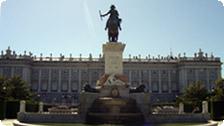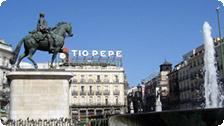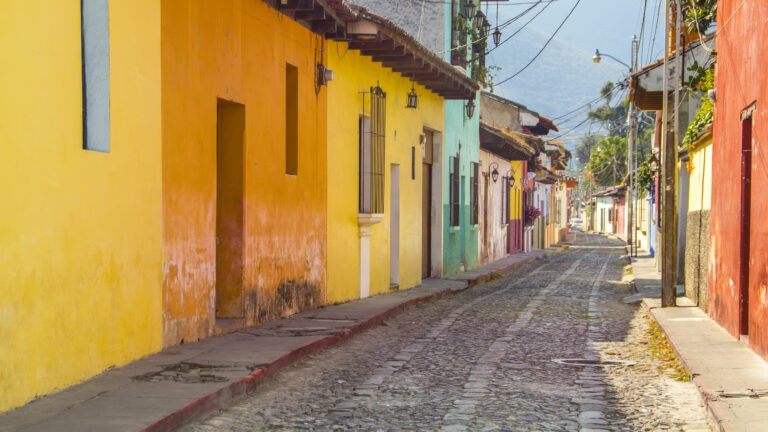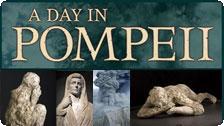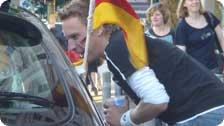Culture: Spain: A Perfect Afternoon in Madrid
by Marnie Binder
It is a precipitous task to define a perfect Madrid afternoon, but any Madrileño would undoubtedly agree that the following route through Spain’s capital comes as close as possible. Call this a perfect Madrid afternoon—because as with any big city, there is an abundance of entertainment in Spain’s capital.
To start the afternoon off right (and to keep with the Spanish tradition of eating the biggest meal between two and five p.m.), head to Casa Lucio, one of the city’s most famous restaurants. Founded in 1974, Casa Lucio has drawn some of the world’s most prominent figures—in fact, part of its clientele goes just to people watch. Elite businessmen, international politicians, famous athletes, writers, actors, musicians (I once had the privilege of noshing next to Lenny Kravitz!), and royal families all come to eat here. On her visit to Spain, Laura Bush dined at the historic tavern with Spain’s Queen Sofía.
Casa Lucio offers cocina castellana, the gastronomy typical of the region. Exquisite Castilian specialties abound, including callos a la madrileña (tripe, Madrid-style), and patatas con huevos (fried eggs with potatoes). For dessert, make sure to order arroz con leche—it’s one of the best in town. The restaurant’s interior, with its winding caves and soft brick walls, is similar to an ancient wine cellar you might encounter in a centuries-old alcazar or castillo.
Expect an average price of 36 €, not including wine. I would recommend a red Rioja or Ribera del Duero (specifically a Muga, Coto de Imaz, or Pesquera) to compliment the full-bodied flavors of Casa Lucio’s specialties. Be sure to make a reservation, though, as this place is no secret treasure. If you can’t get a table, try Viejo Madrid next door, owned and operated by Casa Lucio’s owner’s brother. The menu is exactly the same.
The best cure for a full, satisfied stomach is undoubtedly a brisk stroll through the central and oldest parts of the city. From Casa Lucio, head toward Plaza Mayor. Constructed in the fifteenth century, it was originally the city’s principal marketplace. Since then, it has expanded into what is today a bustling tourist spot, with restaurants, souvenir shops, bars, and cafés, where local flamenco street musicians add to the ambiance with live entertainment.
From Plaza Mayor, pass through Puerta del Sol, perhaps best described as the “Times Square” of Madrid. Look for kilometro zero, a stone slab marking the geometric center of Spain. Continue on to the famous Café del Oriente in the Plaza del Oriente. Here you can sit, rest, and enjoy one of the best cafés con leche in town, accompanied by one of the most spectacular views: the Royal Palace and its surrounding gardens. Interestingly, the development of this beautiful plaza is greatly indebted to Joseph Bonaparte of France, who ruled Spain from 1808 to 1813 under his brother Napoleon Bonaparte’s empire. Time permitting (and if you’re not in need of a siesta at this point from all the food and walking) I recommend taking a tour of the Royal Palace, which was rebuilt by the Bourbon kings after a 1734 fire destroyed the original. Though you are unlikely to see the Spanish royal family (who doesn’t live in this palace), history comes alive before your eyes through the palace’s collection of colonial riches, chandeliers, murals, and tapestries.
Other sites to visit while in Madrid include the Museo del Prado, Museo Thyssen-Bornemisza, and the Centro de Arte Reina Sofía, all within walking distance of one another. The Prado—Madrid’s largest museum—is home to the world’s best collection of Spanish masterpieces, with works by Goya and Velázquez (whose illustrious Las Meninas resides here). The Thyssen’s chronological arrangement makes the museum my personal favorite, and its transitions in style and form make walking through it one of the best art history courses one can attend. At the Reina Sofia, you can find Picasso’s artistic and political masterpiece Guernica. Completed in 1937, this anti-war, anti-Franco statement mostly resided in New York from 1939 until 1981, in deference to Picasso’s request that the painting not return to Spain until democracy was reestablished there. Down the street from the Reina Sofia, you’ll find respite at the Parque del Retiro, where I would advise renting a boat on the lake to enjoy the lustrous Iberian sun.
All of the different traditions and cultures of Spain can be found in Madrid. On a hot afternoon try a sidra, a refreshing alcoholic cider, or apple wine, native to the northwestern region of Asturias—it is poured with both arms extended, quite a spectacle. I have lived in Madrid several years now, and my favorite evening bar is still Cuevas de Sesamo in Sol, where the only drink served is the best sangria in the city. Located underground, the conversation is lively in this intellectual haven, and the walls are uniquely decorated with quotes (in Spanish) from famous writers, poets, politicians, and philosophers. If you are a sports fan, catch a Real Madrid soccer game at Santiago Bernabeu, where some of the greatest soccer players in the world play, including Beckham (England), Zidane (France), Ronaldo and Roberto Carlos (Brazil), Figo (Portugal), and of course Spain’s own Raul and Casillas. For a fabulous evening of genuine and highly talented flamenco dancers and musicians, go to Café de Chinitas—be sure make reservations here too, as it is known to host some of the best professional flamenco performances.
As with any trip, it is impossible to do and see everything in one visit. When traveling, I truly get to know a city and country by trying to spend a day “doing as the natives do.” In Madrid, this would entail eating a lot of food. For breakfast, try the churros con chocolate, found at virtually any cafeteria in Madrid. Have a large mid-day meal, enjoy a paseo, then have a merienda (or snack), get coffee somewhere else around six o’clock p.m. (accompanied by something sweet such as a caña, palmera, or slice of cake). Lastly, have tapas at more than one restaurant around ten p.m. Some of the best and most diverse options can be found at José Luis, with various locations throughout Madrid, or at La Casa del Abuelo and La Zapatería in Sol. Be sure to sample the typical tapas, such as tortilla española (Spanish omelet with potato and onion), chorizo al vino (chorizo sausage in wine), gambas al ajillo (garlic shrimp), champiñones al ajillo (garlic mushrooms), pimientos de pardon (spicy fried green peppers), and pimientos de piquillo rellenos (stuffed roasted red peppers, usually with fish or beef).
When is the best time to visit Madrid? There is a Spanish saying, “In Madrid, there are eight months of winter and four months of summer.” In other words, there isn’t much of a spring or fall. Nonetheless, I would still recommend visiting the city in May or September, before the scorching heat or frigid chill set in.
While visiting Madrid (or any city for that matter) remember: since you can never see everything, the important thing is to enjoy to the fullest what you do see and visit.
* * * *
Getting There
There are no direct flights to Madrid from the west coast of the United States, so you will need to catch a connecting flight to another city first. Carriers that travel most frequently from the U.S. (and which generally have the best prices) include U.S. Airways, Delta, and the Spanish airline Iberia, which fly non-stop from Pennsylvania, Atlanta, and Chicago and New York, respectively.
To Learn More
See these websites before you go:
Madrid City Hall: www.munimadrid.es/Principal/portada.html
Official Spanish Tourism website:
www.spain.info/Tourspain/?language=en
General Information: www.madrid.org
Where to Stay
The Ritz
*****
From 195 € and up (very up!)
Plaza de la Lealtad, 5
t 34.91.701.67.67
Hotel Carlos V Best Western
***
From 74 € and up
Maestro Victoria, 5 · 28013
t +34.91.531.4100
Hostels
Where to Eat
Casa Lucio
Specialties: callos a la madrileña, patatas con huevos, arroz con leche
Average price per person: 36 €
Calle Cava Baja, 35
t 34.91.365.82.17
Restaurante Botin
Listed in The Guinness Book of World Records as the “oldest restaurant in the world,” (in the modern sense of the word “restaurant”) Restaurante Botin was established 1725
Average price per person: 25 €
Calle Cuchilleros, 17
t 34.91.366.42.17
www.botin.es
Asador Aranduero
Specialty: cordero (lamb)
Average price per person: 24 €
Salustiano Olózaga, 16
t 34.91.576.86.20
and
Alberto Aguilera, 26
t 34.91.447.36.13
José Luis
Specialty: tapas
Average price per person: 15 €
Multiple locations throughout Madrid
t 34.91.563.09.58
Discover more from Tango Diva
Subscribe to get the latest posts sent to your email.
